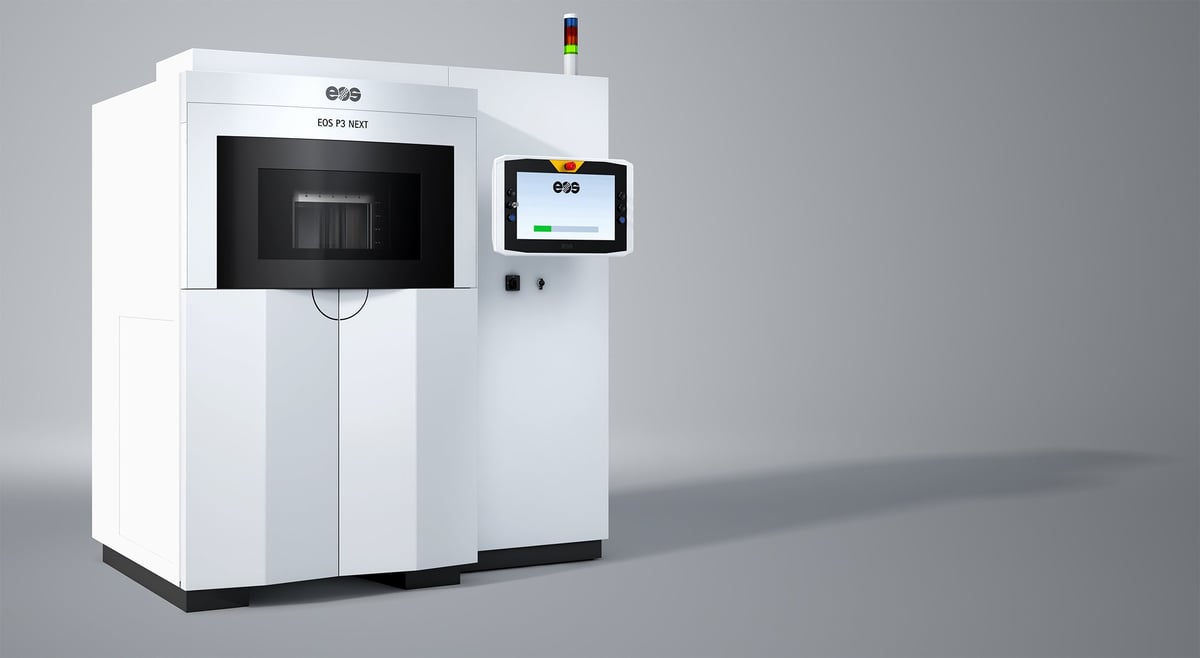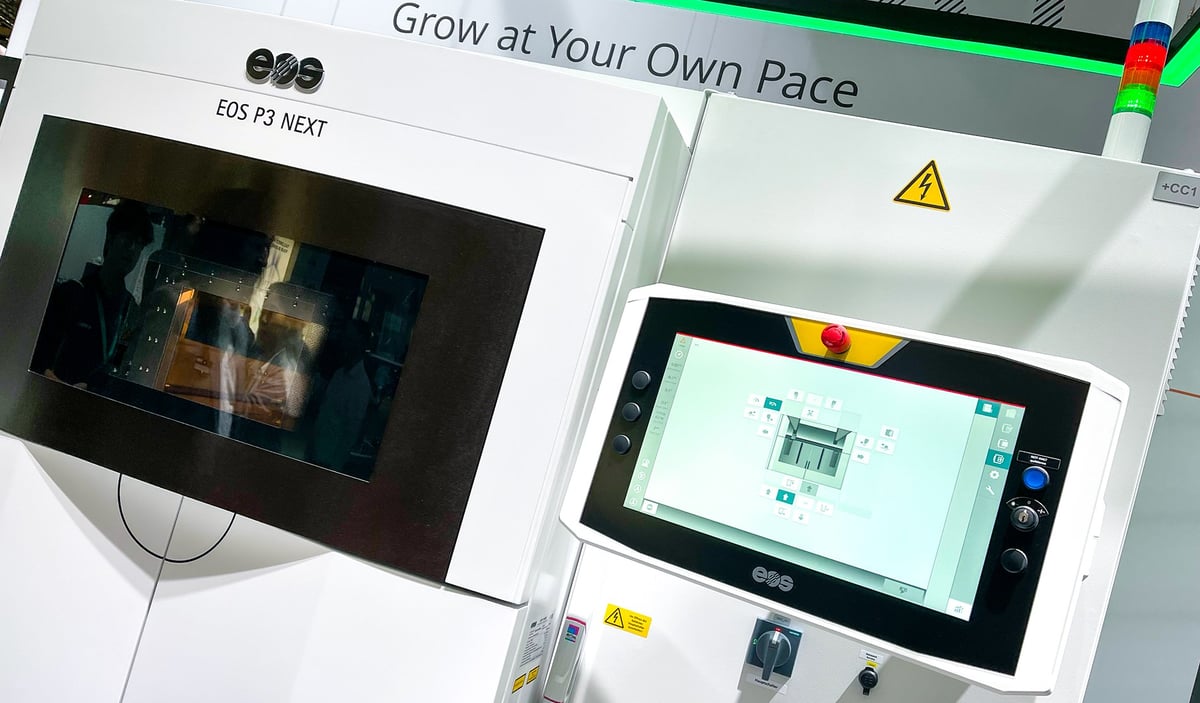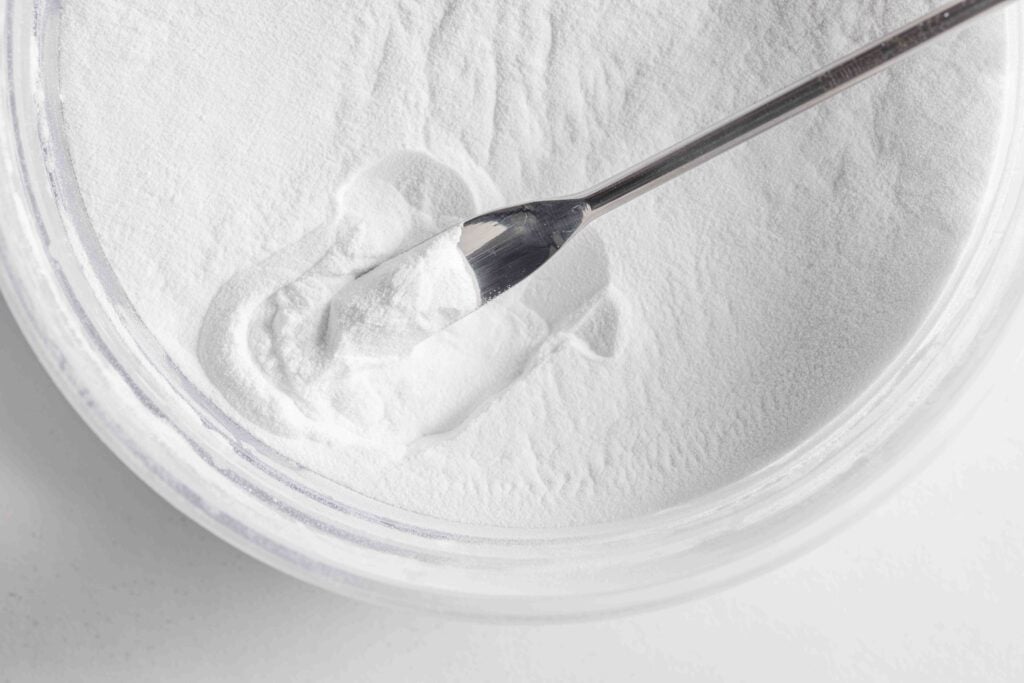EOS, the German-based manufacturer of some of the world’s most popular industrial 3D printers, today launched a new generation of its polymer selective laser sintering platform to focus on productivity and cost efficiency, while maintaining its established reputation for part quality.
The new EOS P3 Next, is just that: the next version of EOS’ P 396 launched in 2016, but it’s more than an upgrade. The new system promises a 50% increase in productivity and a 30% reduction in costs compared to the P 396. Key features include a 36% faster “layer creation time”, the ability to swap out a build units, and a high material reuse rate (80% with the new ALM PA 950 HD nylon 12 and 70% with EOS PA 2220 HighReuse).

Let’s first talk about how the P3 Next is the same as the P 396, which has an install base of more than 400 worldwide, so it has been quite popular. Both machines have roughly the same footprint and build volume (340 x 340 x 600 mm) in the medium part-size range, and EOS says the part quality will be the same, or slightly improved in some cases on the P3 Next.
Now for what’s new.
EOS says it listened to its customers and addressed what they wanted in a new version of the P 396. There are a lot of customers and a lot of use cases so EOS had plenty of data to work with to determine that, overall, companies wanted more efficiency and ease of use out of a machine, plus the ability to lower the cost per part. In other words, the essentials required to ramp up production.

“We listened very carefully to which were the vectors that we had to push for to go into production,” Virginia Palacios, the chief business officer of EOS’ polymer solutions, told All3DP. “We believe the future of it is going to come from final part production.”
Unlike in the past, when 3D printer manufacturers were relatively agnostic when it came to what their customers used the machines for, today, EOS — like HP and Formlabs — are targeting specific use cases with additional support and features. For example, EOS knows that a large swath of its customers are in the dental industry, and looking to scale their operations.
“We have made sure that we have a specific parameter set for them,” Palacios says of the dental companies using the P 396 for in-mouth applications, such as palate expanders and sleep apnea devices. Although a lot of dental 3D printing is done with resin technology, EOS has a niche in the market being the only SLS provider with FDA certifications, along with certifications in China and EMEA.

Other target markets for the P3 Next include medical device companies, end-of-arm tooling, and consumer goods. But since such a large part of EOS’ install base is the 3D printing service provider market, which does mixed builds, Palacios is quick to point out that they can still do this with the new system.
EOS’ consulting wing, Additive Minds, is also a key element of the new offering, says Palacios: “In the past, our Additive Minds team was more focused on enabling a new application for a one shot. Now they are working with our customers to improve the production KPIs, so we are seeing our customers moving more into real production.”
Opportunities for EOS are not only current customers scaling up operations, but companies looking to get into additive manufacturing for production. “For those customers, we can provide a full program where we develop the applications with them on our side, we train their team, and then we put that in that in their facility, and we help them scale. So we have a full catalog of offerings depending on where the customer is in the adoption journey.”
Capturing customers who don’t want to buy printers
A shift in the additive manufacturing space that EOS has noticed and is addressing with the P3 Next, is the desire for OEMs to 3D print their products, but not do it themselves. They want the manufacturing done by a dedicated contract manufacturer.

At Formnext, EOS spotlighted a service provider in Florida, Addman Group, that they’re helping establish a new offering the goal of serving the medical device industry. “The intent is that we will go with them to the OEMs and sell the applications,” says Palacios. “They will be the ones producing, and our contact will be with them, but we help them develop the market.”
Jay Dinsmore, executive vice president at Addman says “the EOS P3 Next allows us to produce applications for the regulated medical market within a fully certified production environment, ensuring we meet both quality and compliance benchmarks.”
But for company that do want to do the printing, EOS is promising to make that task easier.
Achieving the type of ease of use where nearly anyone in an organization can push the right buttons to achieve a quality build was another important focus for the new machine. No industrial SLS today could be called plug-and-play, but EOS has introduced features, like a default set of parameters for each material, that take a lot of the parameter tuning work out of the process.
EOS offers a range of targeted pre-sets. For example, if your priority is surface finish, EOS’ Additive Minds will tune the dozens of printing parameters that control laser power, scanning strategy, scanning speed, layer height, and more, to give you a recipe that optimizes for surface finish. The same is possible for prioritizing accuracy or strength or optimizing the whole process for productivity or for cost.
The P 396 also has adjustable parameters, but in a different way and with different ranges, plus a different user interface for design experiments, says Palacios.”But now in the software, we say, optimize for productivity, and then we suggest the things to optimize for productivity, such as recoater speed and layer thickness. It’s a bit more user friendly.” Advanced users still have full process control for optimization. Dashboards are also provided on the status of the fleet or can be customized to your needs.
What does higher efficiency really mean?
When EOS says the P3 Next has 50% higher “efficiency” than the P 396, what that really means in concrete terms, is that you can get 50% more parts printed in a day, Palacios says.
“We are cutting the layer time 36% , cutting the heating time, cutting the dead time at the beginning and at the end of the build, and introducing a hot swap functionality, so that once the build is finished, we can take it out and start immediately the with next one, instead of having it cool for a long time in the printer,” says Palacios.
Another aspect of efficiency is machine up-time or availability, which EOS says is more than 90%. Availability is the time that the machine is available to print, which is 100% minus the time spent waiting for parts to cool, time cleaning out the material, time on maintenance, or time spent on failed prints.
Palacios says the P3 Next has a very low failure rate. In another advancement, borrowed significantly from the development work EOS has done with its metal laser powder bed fusion printers, new software not only manages all the steps in the production, but does analytics, and generates quality reports on how the build went. Operators can track if there were print anomalies during the build and evaluate precisely what settings are optimized.
Offering new post-processing, but via partners
EOS has long been a 3D printer manufacturer that focused on the printer and the materials, leaving the post-processing equipment to companies with decades of experience. The P3 Next can be matched with automatic powder mixing and automatic unpacking equipment from AM Solutions.
In the end, what EOS offers, says Palacios, is a “whole solution, including the printer, material, service, software, everything orchestrated together with our Additive Minds team.”
Tech Specs EOS P3 Next
- Technology: selective laser sintering (SLS)
- Build Volume: 340 x 340 x 600 mm
- Laser: 1 x 70 W CO₂
- Laser scan speed: up to 10 m/s
- Build Rate: 5.3 liters per hour
- Min. Layer Thickness: 0.06 mm
- Materials: At launch included PA 2200, PA 2220 HighReuse, PA 2201, PA 1101, PA 3200 GF, PA 2141 FR and ALM PA 950 HD. Additional materials qualified per customer request.
The EOS P3 Next is commercially available beginning December 2024.
License: The text of "EOS’ New P3 Next SLS 3D Printer Has 50% More Throughput" by All3DP Pro is licensed under a Creative Commons Attribution 4.0 International License.

